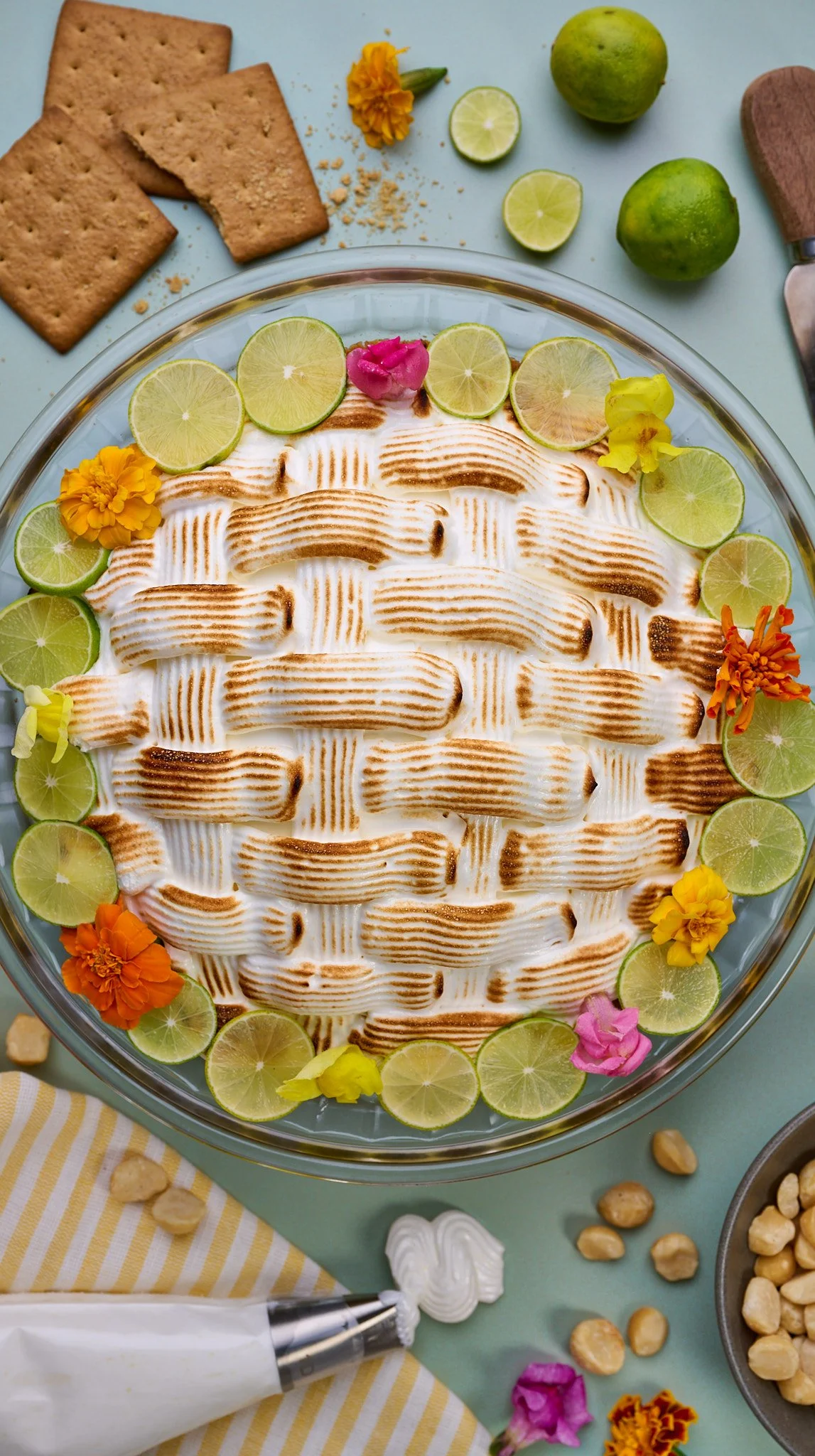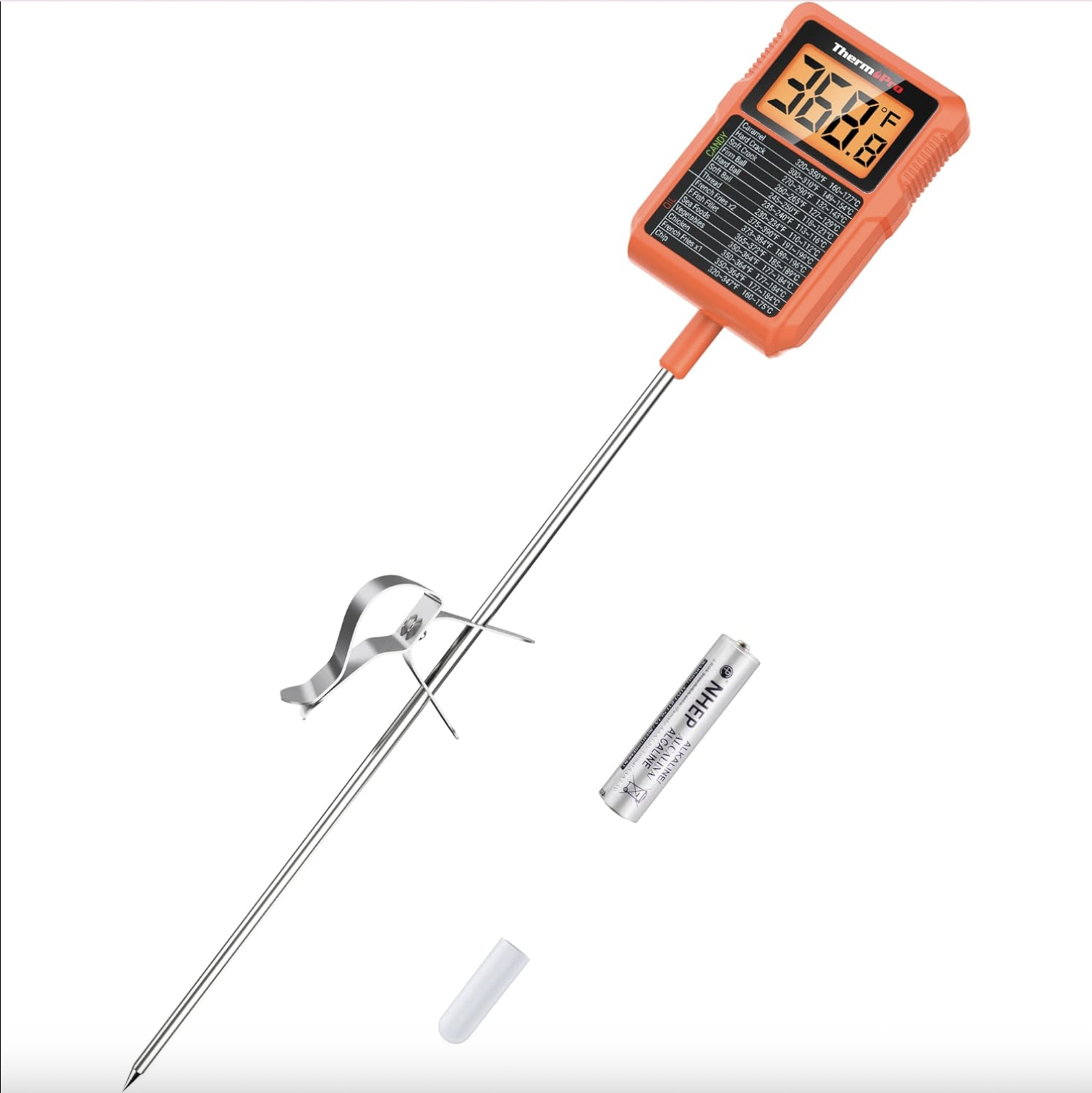Key Lime Island Pie
serves 8-10My husband was obsessed with a key lime pie from a restaurant that sadly closed. But it wasn’t your typical key lime—it was light and fluffy, more like a mousse or whipped cream.
I set out to recreate it, and honestly, it turned out even better. Traditional key lime pies use sweetened condensed milk for a rich, curd-like texture (delicious, but not what we were going for). So, I took a page from lemon chiffon pies and made a key lime chiffon: a mousse-style filling stabilized with gelatin. It’s lighter, less overpowering, and leaves room for other flavors.
To lean into the tropical vibes, I flavored the meringue with freeze-dried pineapple—it tastes like a pillowy pineapple marshmallow. And the crust? A graham cracker base amped up with toasted macadamias and coconut, giving it a nutty, cookie-like depth that ties it all together.
Note: This pie needs time to set in the fridge, so I recommend making it the day before and topping it with fresh meringue just before serving.
WHAT YOU’LL NEED
INGREDIENTS
Coconut-Macadamia Crust
1 ¼ cup graham cracker crumbs
⅓ cup unsweetened shredded coconut
½ cup whole macadamia nuts
¼ cup granulated sugar
½ tsp kosher salt
6 tbsp unsalted butter, melted
Key Lime Filling
4 egg yolks
⅓ cup key lime juice (bottled is fine)
½ cup + 2 tbsp granulated sugar
3 tbsp unsalted butter
¾ tsp unflavored powdered gelatin + 2 tbsp cold water (for blooming)
Pinch of kosher salt
1 ¼ cups heavy cream, whipped to soft peaks
Pineapple Meringue
4 egg whites
¼ tsp cream of tartar
Pinch of kosher salt
1 cup granulated sugar
¼ cup water
2 ½ tbsp freeze-dried pineapple powder (blend freeze-dried pineapple to a fine powder, then sift)
DIRECTIONS
Make the Crust
Preheat oven to 325°F (163°C). Spread coconut and macadamia nuts on a baking sheet and toast for 10 minutes, stirring halfway through. Let cool.
Increase oven temperature to 350°F (177°C).
In a food processor, blend graham crackers, toasted coconut, toasted macadamias, sugar, and salt until fine and even.
Add melted butter and pulse until combined.
Press mixture firmly into the bottom and sides of a 9-inch pie dish.
Bake for 15–20 minutes, until golden brown and set. Cool completely before filling.
Make the Lime Chiffon Filling
Bloom gelatin: In a small bowl, sprinkle gelatin over 2 tbsp cold water and let sit for 5–10 minutes.
In a medium saucepan, whisk together egg yolks, sugar, lime juice, and salt.
Cook over medium-low heat, whisking constantly, until the mixture thickens and reaches 165°F (or coats the back of a spoon).
Remove from heat and stir in the bloomed gelatin until fully dissolved.
Add butter and whisk until smooth. Let cool to room temperature.
Using a stand mixer or hand mixer, whip the cream to medium peaks. Fold the whipped cream into the cooled lime curd in 2–3 additions until light, airy, and fully incorporated.
Pour filling into the cooled crust and smooth the top. Chill in the fridge for at least 6 hours or overnight until fully set.
Make the Pineapple Meringue
In the bowl of a stand mixer fitted with the whisk attachment, beat egg whites, cream of tartar, and a pinch of salt on medium-high speed until very foamy.
Meanwhile, in a small saucepan, heat sugar and water over medium heat until it reaches 240°F.
With the mixer running on medium-high, slowly stream the hot syrup into the egg whites, aiming for the side of the bowl to avoid the whisk and prevent splatter.
Increase speed to high and beat for 4–5 minutes, until stiff, glossy peaks form and the meringue is slightly cooled.
Sift in pineapple powder and beat just until combined.
Spoon or pipe meringue onto the chilled pie. Torch until golden, if desired. Keep chilled until ready to serve.
RECIPE NOTES & TIPS
This pie needs at least 6 hours to chill, so I recommend making it the day before and adding the meringue topping the day you plan to serve.
If your lime curd looks lumpy, it’s likely from bits of egg that cooked too quickly or unevenly—this can happen if the heat is too high or if you stop stirring. Easily fixed by pressing the curd through a fine mesh sieve to give you a silky smooth base.
Don’t like coconut? Simply omit from the crust and replace with an equal amount of additional graham cracker crumbs.
If your lime curd looks lumpy, it’s likely from bits of egg that cooked too quickly or unevenly—this can happen if the heat is too high or if you stop stirring. Just press it through a fine mesh sieve and you’ll be good to go.
The cream of tartar helps stabilize the egg whites in your meringue. It makes the foam more resilient so you get stiff, glossy peaks that hold their shape without weeping or collapsing.
For the basketweave design, I used a medium basketweave piping tip. There’s a great video tutorial here if you want to try it too.









